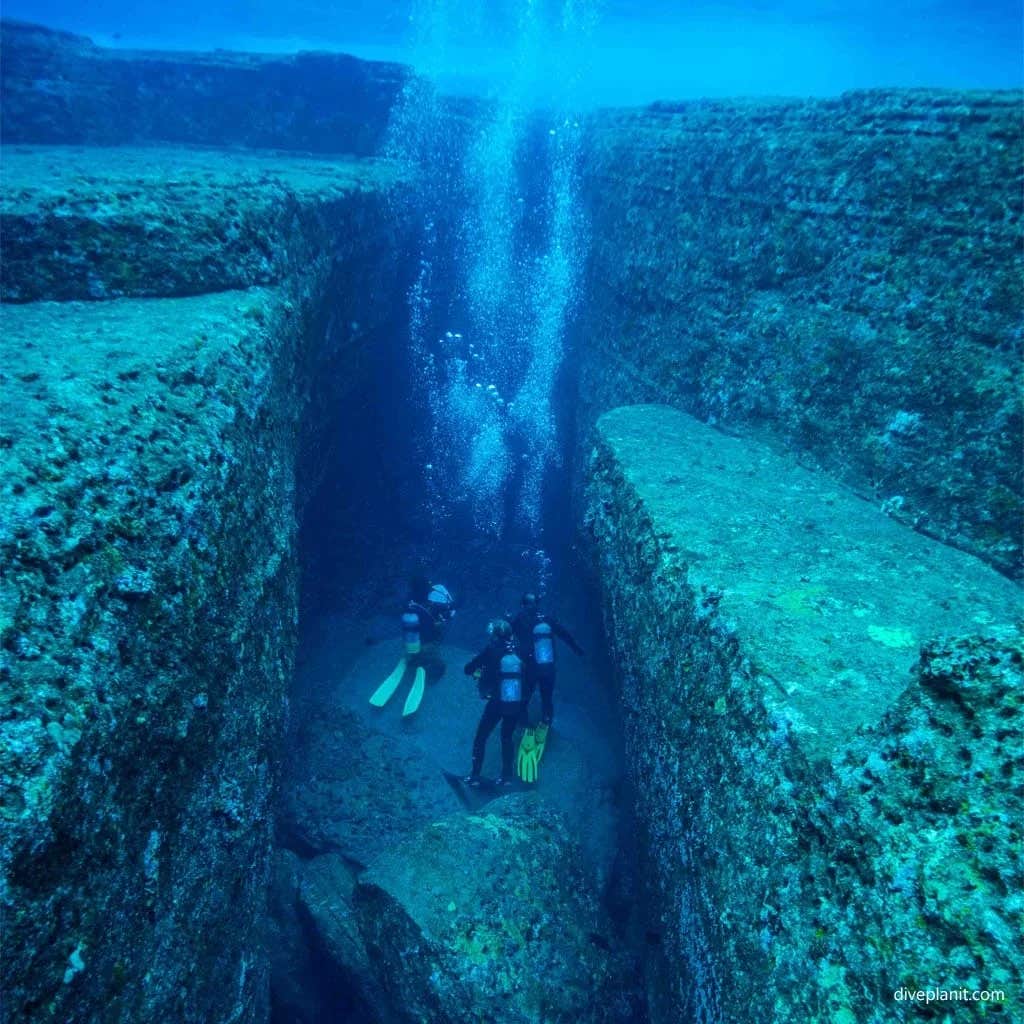Ancient underwater monument from the last ice age discovered in Japan
The underwater monument near Yonaguni Island has puzzled divers and researchers since its discovery in 1986.

The monument may date back 10,000 years, placing its origin during the last Ice Age when sea levels were much lower. (CREDIT: CC BY-SA 3.0)
The underwater monument near Yonaguni Island has puzzled divers and researchers since its discovery in 1986. Submerged beneath the waves off Japan’s southwestern coast, the vast stone structure continues to divide opinions nearly four decades later.
Its angular features, carved-looking platforms, and towering size have drawn two main schools of thought. Some scientists insist nature did the work—erosion, earthquakes, and shifting currents slowly sculpting the formation. Others believe something far older and more mysterious lies beneath the surface.
It all started when Kihachiro Aratake, a local diver scouting for new tourist dive sites, spotted something unusual on the seafloor. What he found wasn’t just a rocky outcrop—it looked deliberate, almost architectural. Word of the discovery spread fast, drawing a wave of curious explorers.
Divers describe the monument’s flat planes, clean edges, and terraced layers with a sense of awe. These geometric forms don’t look accidental. The structure's sharp corners and symmetry suggest a guiding hand rather than the randomness of erosion.
Spanning roughly 150 meters long, 40 meters wide, and 27 meters tall, the monument towers beneath the sea like a sunken pyramid. Broad surfaces rise in tiers, with right angles that defy typical underwater geology. Its scale and precision have sparked heated debate.
Terraces appear to step upward like platforms or stairs, reinforcing the sense of design. These features have led some to propose that the monument could be the legacy of a long-lost culture swallowed by the sea. Rising waters, they argue, may have buried more than we know.
One of the monument's strongest defenders is Professor Masaaki Kimura, a marine geologist at the University of the Ryukyus. After years of diving and analysis, Kimura argues that natural forces alone can’t explain the layout. “The design is too regular,” he maintains.
Kimura also points to nearby features that support his theory. He claims to have found a road, what looks like a castle, and even carvings shaped like animals. For him, these clues strengthen the idea that human hands helped shape the Yonaguni Monument.
Related Stories
Kimura’s research suggests the monument could date back approximately 10,000 years, placing its origins in the last Ice Age when sea levels were significantly lower. If accurate, this timeline raises the possibility that the monument was once part of a sprawling city or religious site that later became submerged as sea levels rose.
Despite these claims, many geologists remain unconvinced. They contend that the monument’s features can be attributed to natural geological processes.
Yonaguni Island lies in a seismically active region near a tectonic fault line, making the area highly susceptible to earthquakes and the shifting of geological plates. This natural activity, they argue, could easily explain the monument's unusual formations.
These tectonic forces, they argue, could account for the straight fractures and geometric patterns observed in the monument. The rock that forms the structure is mostly sandstone, which is relatively soft and can be shaped by natural forces like water currents and erosion over time.
Examples of natural formations resembling artificial structures can be found worldwide. The Bimini Road, an underwater rock formation in the Bahamas, and the Giant’s Causeway in Northern Ireland both exhibit geometric shapes that mimic human design but are entirely natural in origin.
Supporters of the natural formation theory argue that while the Yonaguni Monument is impressive, it is not entirely unique. The forces of nature are capable of producing shapes that appear artificial.
The lack of definitive evidence has made it difficult to settle the debate. No artifacts, such as tools or pottery, have been discovered at the site that would indicate human activity. Nor are there any records or oral histories from the region that mention an ancient civilization in the area.
This absence of evidence makes it nearly impossible to conclusively determine whether the monument is natural or man-made.
One of the main challenges for researchers is the monument’s underwater location. The structure is submerged about 25 meters beneath the surface, adding another layer of complexity to the investigation. During the last Ice Age, sea levels were much lower, and what is now the ocean floor would have been dry land.
If the monument is man-made, it could have been built during this period before the rising seas engulfed it, placing its construction before the rise of known civilizations in the region. This timeline raises the possibility that the monument could represent a previously unknown chapter of human history in East Asia.
The mystery of the Yonaguni Monument has attracted researchers from around the world, and the site has become a popular destination for divers. While the structure itself continues to captivate the imagination, the surrounding area is also home to a rich array of marine life, including schools of fish, sea turtles, and even hammerhead sharks.
The strong currents and clear waters make it a challenging but rewarding dive, with the monument’s step-like features providing a dramatic backdrop for underwater exploration.
Despite the uncertainty surrounding its origins, the Yonaguni Monument remains a stunning example of the mysteries hidden beneath the sea. Whether natural or artificial, it serves as a reminder of how much we still have to learn about our world.
The monument’s discovery has raised new questions about the history of human development and the forces that shape our planet. Even if it turns out to be a natural formation, the Yonaguni Monument continues to captivate the minds of those who seek to understand its origins.
Masaaki Kimura’s theory has also drawn connections between the monument and the legendary lost continent of Mu, a fabled Pacific civilization that was said to have been submerged by a cataclysmic event.
He points to carvings resembling animals and an underwater sphinx that, according to him, bears a striking resemblance to ancient Chinese or Okinawan rulers. This connection to Mu remains speculative, but it adds to the monument’s allure as a possible key to unlocking an ancient mystery.
However, not all scientists agree with Kimura’s conclusions. Robert Schoch, a professor at Boston University, has explored the site and is firmly in the natural formation camp. He believes the straight edges and terraces can be explained by the region’s tectonic activity and the natural properties of the sandstone.
In his view, the monument’s sharp angles and symmetrical features are not as consistent as some claim, and the markings on the rocks are likely the result of underwater erosion or marine life.
More than 30 years after its discovery, the debate over the Yonaguni Monument shows no signs of slowing down. The lack of definitive evidence on either side means that the structure’s origin remains a mystery.
But whether it was carved by human hands or shaped by natural forces, the monument continues to inspire wonder and fascination. It stands as a reminder of the many secrets our planet still holds beneath the surface of the sea.
Note: Materials provided above by The Brighter Side of News. Content may be edited for style and length.
Like these kind of feel good stories? Get The Brighter Side of News' newsletter.



